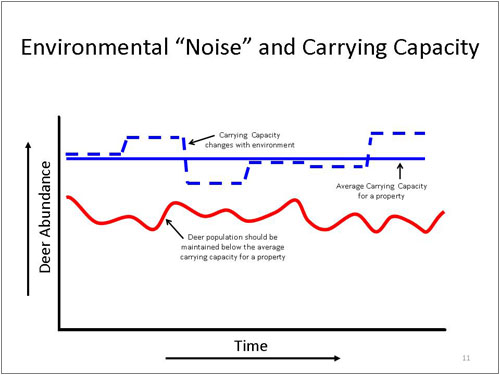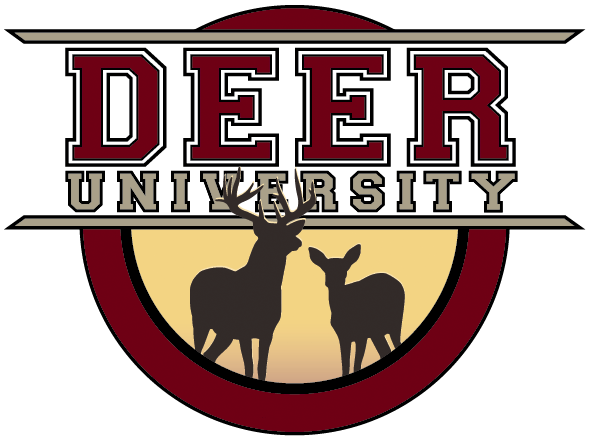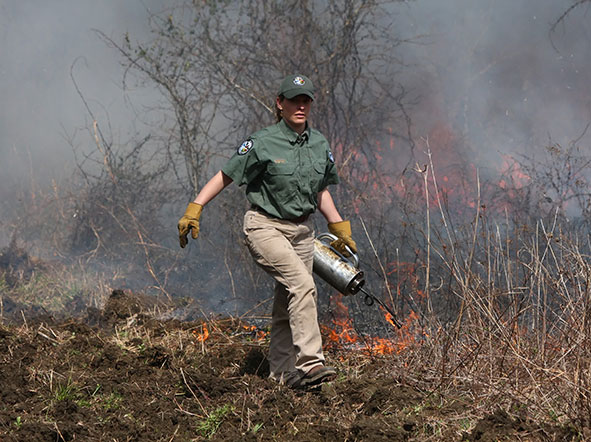Deer Habitat Carrying Capacity
The fundamental property of density dependence is the relationship between deer population size and available food. Notice from the graph that as deer population size increases the amount of deer food decreases.
This incremental, annual decline in food supply affects the body condition of deer which influences their reproductive rate and survival rate, and ultimately reduces the population growth rate. Thus, as deer populations near the habitat's carrying capacity the rate of growth begins to slow down. That is why deer population growth is often depicted with sigmoid or "S" shaped growth curve as in (Figure 2 seen here); in the beginning deer populations have exponential growth, but as food becomes limited the growth rate begins to decline and the annual change in population size decreases.
Plant and Animal Dynamics During Population Growth
This figure shows the theoretical relationship between naturally occurring deer food and deer population size over time. When deer populations get too high they can actually damage the plant-food base that sustains them. This is because the deer eliminate the number of food producing plants, or they diminish the capacity of those plants to produce enough forage for the deer. This is similar to pruning a shrub or mowing the lawn. The right amount of plant removal will typically not damage the plant, or sometimes this even stimulates plant growth. But when too much of the plant is consumed it may become damaged and die, or not provide additional plant growth. Habitat damage and subsequent reduction of deer carrying capacity is depicted in (Figure 10) below.
How can a deer population exceed the habitat's carrying capacity?
So you may ask "how can a deer population exceed the habitat's carrying capacity?" Shouldn't density dependence slow population growth enough to keep the population below carrying capacity? In some cases yes, in other cases no. Let's refer to (Figure 11) to review this question.
Although we refer to carrying capacity as this maximum number the habitat can sustain, in actuality this number is always changing. Not only does carrying capacity fluctuate from year to year, it fluctuates from season to season. Because deer are herbivores, they depend on plants for food and plant growth is affected by precipitation and temperature. So annual changes in rainfall, for example, can influence carrying capacity by affecting the growth of deer food plants and their quality. Furthermore, the annual acorn crop can be highly variable.
A significant proportion of the fall and winter diet of deer is comprised of acorns. So all of these "environmental" factors will affect the annual and seasonal carrying capacity for a deer population in a given area. A deer population that is growing, or is maintained at carrying capacity, can actually exceed carrying capacity the following year because carrying capacity was lowered by changes in the environment (like drought, for example). During the time the deer population is above the habitat's carrying capacity is when the most damage to the habitat can occur. This is also a time when deer are in very poor condition and death due to malnutrition or starvation can occur.
The best management strategy to ensure a healthy deer herd is to keep the population below the average carrying capacity for a property. Remember, all properties have a different carrying capacity that depends on habitat quality. Areas with superior habitat quality will enable populations to grow very quickly towards the habitat's carrying capacity, while populations that occur on poor habitat will grow much more slowly.
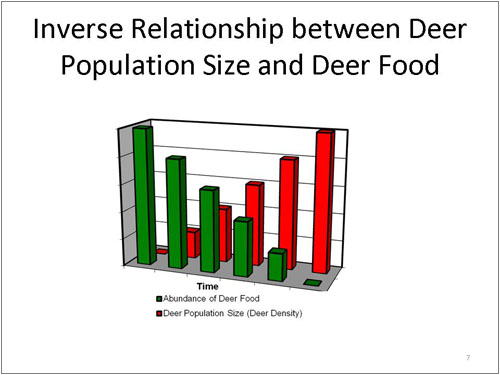
Inverse Relationship between Deer Population Size and Deer Food
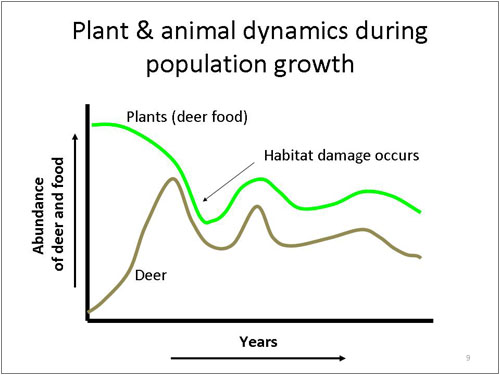
Plant and Animal Dynamics During Population Growth
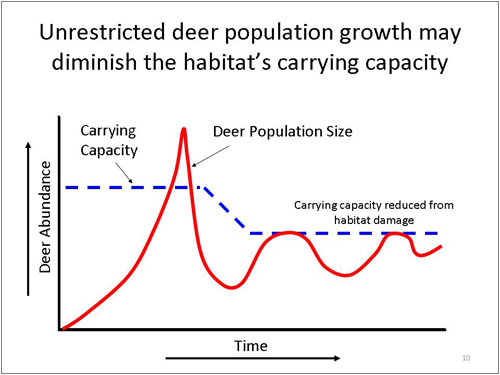
Unrestricted Deer Population Growth May Diminish the Habitat's Carrying Capacity
